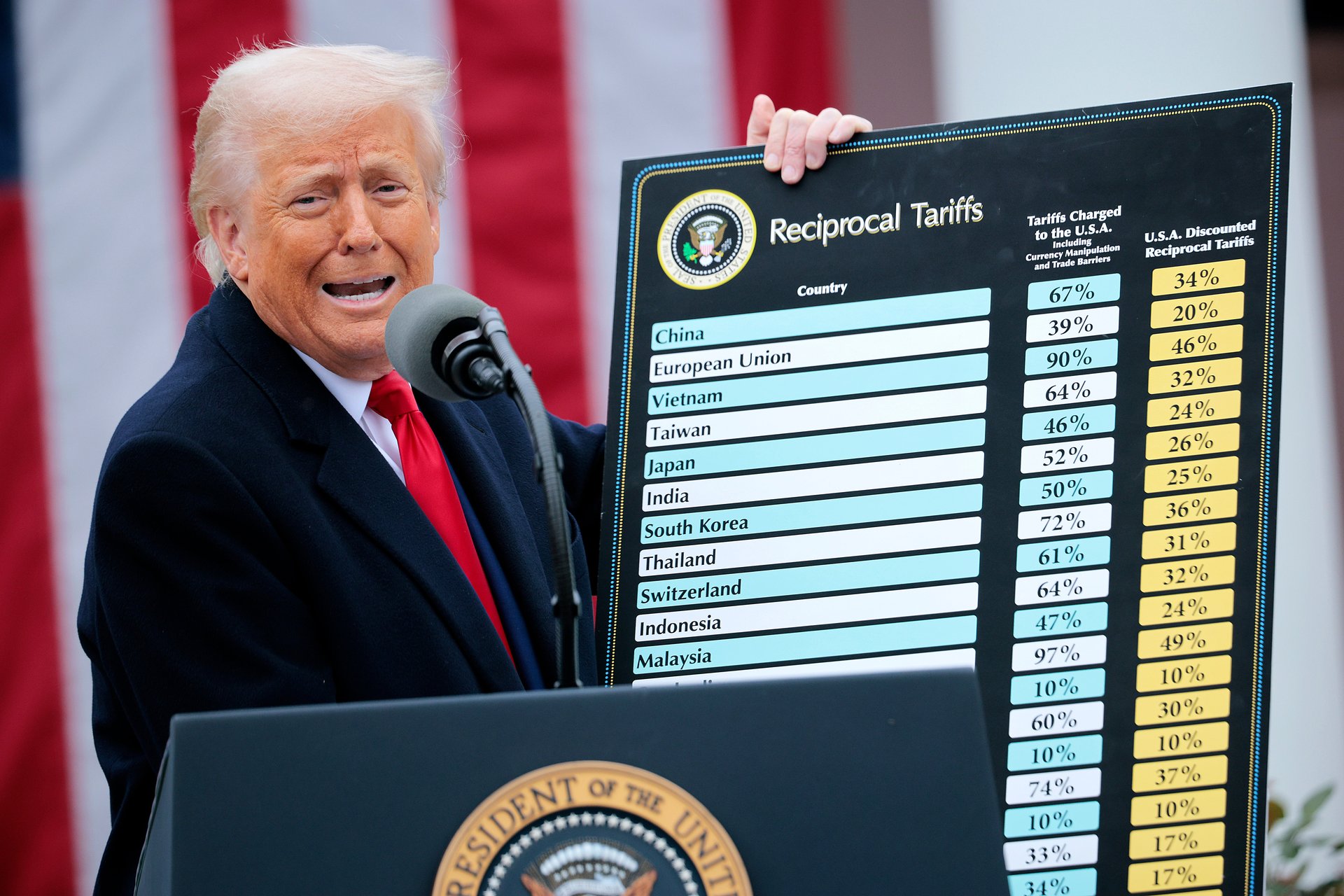Trump's new tariffs would be laughed out of a high school economics class, analyst says
The tariffs rival the scale of the Great Depression-era Smoot-Hawley Act

President Donald Trump’s so-called “reciprocal” tariffs haven’t been well received, especially after the White House explained its math.
Suggested Reading
“If a 9th grader in high school presented this tariff chart to a teacher in a basic economics class the teacher would laugh and say sit down and work on the assignment,” Wedbush Securities analyst Dan Ives, who oversees technology firm coverage, said in a Thursday note to clients.
When Trump took the stage at the White House Rose Garden on Wednesday evening, he said his tariffs — designed to make trade more fair — would be applied on an individual basis. The U.S., Trump said, made its determinations based on the combined rate of tariffs, non-monetary barriers, “and other forms of cheating,” and plans to charge half of that rate. There’s also a 10% base tariff on almost all countries.
“April, 2, 2025, will forever be remembered as the day American industry was reborn, the day America’s destiny was reclaimed, and the day that we began to make America wealthy again,” Trump said.
The baseline 10% tariff on all countries will go into effect Saturday at 12:01 a.m. ET; the reciprocal levies are scheduled for enactment on April 9 at 12:01 a.m. ET.
The rates announced by the White House initially puzzled economists and other observers. Israel, which just lowered its tariffs on U.S. goods, was slapped with a 17% rate, while the Heard Island and McDonald Islands, which are external territories of Australia and uninhabited, were slapped with 10% duties.
A White House spokesperson claimed, citing the U.S. Trade Representative’s formula, that the administration “literally calculated tariff and non-tariff barriers.” But it appears that the math was much simpler. Essentially, instead of calculating the effect of both tariff and non-tariff barriers, the Trump administration divided each country’s goods trade deficits by imports from that country.
“Put simply, the bigger the nominal trade deficit a country has with the U.S. adjusted for the absolute size of that country’s imports, the bigger the tariff,” Deutsche Bank (DB) analyst George Saravelos said in a note. Deutsche also warned that the dollar “is at risk of a broader confidence crisis.”
Trump’s announced tariffs — including prior duties, such as those impacting steel and aluminum imports — would raise the effective tariff rate of the U.S. to 18.8%, according to Goldman Sachs (GS), which is greater than the bank initially expected. Morgan Stanley’s (MS) math shows an effective tariff rate of 22%, up from 2.4% last year, which could lead to a 5% increase in import prices.
That would make Trump’s tariffs rival in scale to those implemented by the Smoot-Hawley Act, enacted in June 1930 to protect U.S. farmers and businesses from foreign competition. It also worsened the effects of the Great Depression.
Douglas Irwin, an economics professor at Dartmouth College, called the tariff hikes “an off-the-chart” increase, noting that it goes further than the 1971 “Nixon Shock.”
S&P 500 Futures fell 213 points, 3.7%, while Dow Jones Industrial Average futures cratered 1,297 points, or 3%. Futures tied to the Nasdaq 100 dropped 896 points, or by more than 4.5%.
“What we’ve seen today represents a watershed moment in American trade policy that poses severe downside risks to the global economy,” said John Denton, the secretary general of the International Chamber of Commerce, adding that countries should focus on de-escalation, not retaliation.
But retaliation is likely on the way.
Mexico is set to announce its measures later on Thursday over earlier tariffs on imports from the major trade partner, while Canada has already announced its plans. China, slammed with an average tariff rate of 65%, has vowed to retaliate, while European leaders have condemned the tariffs and are preparing countermeasures.
“We’re talking with all of the major countries of the world, and we’ve been talking to them for more than a month,” Commerce Secretary Howard Lutnick said on CNBC (CMCSA) Thursday morning of negotiations.
But Lutnick was also quick to throw cold water on the idea of exemptions for any country. When asked if making concessions to the U.S. could win countries an exemption, Lutnick said it was unlikely.
“I don’t think the word ‘exemption’ is going to be a factor. I don’t think that’s such a thing,” Lutnick said. “Let’s go try to figure out ways for the world to treat us more fairly and more properly. I don’t think it’s effective for the world to retaliate. I mean, those things are silly.”
